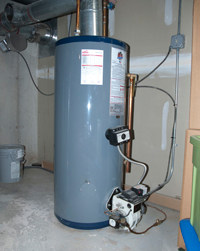They are making a few good pointers regarding How to Maintain a Hot Water Heater in a Few Simple Steps in general in the content underneath.

Warm water is essential for everyday convenience, whether it's for a revitalizing shower or washing dishes. To ensure your warm water system runs successfully and lasts much longer, routine maintenance is essential. This write-up supplies sensible tips and insights on exactly how to preserve your home's hot water system to avoid disruptions and pricey fixings.
Intro
Preserving your home's hot water system might appear overwhelming, but with a few easy steps, you can guarantee it runs efficiently for many years to come. This guide covers everything from understanding your warm water system to DIY upkeep ideas and knowing when to contact expert assistance.
Relevance of Keeping Your Warm Water System
Regular maintenance not only prolongs the lifespan of your hot water system but also ensures it operates efficiently. Overlooking upkeep can result in reduced performance, higher energy bills, and even early failing of the system.
Signs Your Warm Water System Requirements Maintenance
Understanding when your hot water system needs focus can protect against major concerns. Keep an eye out for indications such as inconsistent water temperature, weird sounds from the heating unit, or rustic water.
Flushing the Water Heater
Flushing your water heater gets rid of debris accumulation, improving efficiency and prolonging its life.
Monitoring and Replacing Anode Rods
Anode rods protect against rust inside the tank. Inspecting and replacing them when broken is vital.
Complex Concerns Needing Professional Aid
Instances include significant leakages, electrical troubles, or if your water heater is continually underperforming.
Regular Professional Upkeep Perks
Professional upkeep can include detailed assessments, tune-ups, and guaranteeing conformity with safety and security criteria.
Inspecting and Changing Temperature Setups
Adjusting the temperature level setups makes sure optimal performance and safety and security.
DIY Tips for Upkeep
You can carry out several upkeep jobs on your own to maintain your hot water system in top condition.
Looking for Leaks
Regularly check pipelines and connections for leakages, as these can lead to water damage and greater bills.
Recognizing Your Hot Water System
Before diving right into upkeep tasks, it's practical to understand the fundamental components of your hot water system. Commonly, this includes the water heater itself, pipelines, anode poles, and temperature controls.
Regular Monthly Maintenance Tasks
Regular regular monthly checks can aid catch minor problems prior to they rise.
Evaluating Stress Alleviation Valves
Testing the pressure safety valve guarantees it functions properly and prevents too much pressure accumulation.
Protecting Pipelines
Protecting hot water pipes reduces heat loss and can save power.
When to Call a Specialist
While do it yourself upkeep is advantageous, some problems call for expert know-how.
Final thought
Normal maintenance of your home's hot water system is vital for effectiveness, long life, and expense savings. By complying with these pointers and understanding when to look for expert aid, you can guarantee a dependable supply of warm water without unanticipated disturbances.
How to Maintain an Instant Hot Water Heater
Before tinkering with your hot water heater, make sure that it’s not powered on. You also have to turn off the main circuit breaker and shut off the main gas line to prevent accidents. Also turn off the water valves connected to your unit to prevent water from flowing into and out of the appliance. 2. When you’re done, you have to detach the purge valves’ caps. These look like the letter “T” and are situated on either side of the water valves. Doing so will release any pressure that has accumulated inside the valves while at the same time avoid hot water from shooting out and burning your skin. 3. When the purge valves’ caps are removed, you have to connect your hosing lines to the valves. Your unit should have come with three hoses but if it didn’t, you can purchase these things from any hardware or home repair shops. You can also get them from retail stores that sell water heating systems. Read the user’s manual and follow it to complete this task properly. When the hosing lines are connected, open the purge port’s valves. 4. You should never use harsh chemical cleaners or solutions when cleaning your unit. Make use of white vinegar instead. It should be undiluted and you’ll probably use about 2 gallons. 5. Now flush your water heater. This task should probably take about 40 minutes. We can’t give you specific directions for this because the procedure is carried out depending on the type, model and brand of your heater. With that being said, refer to the user’s manual. 6. When you’re done draining the unit, you have to turn off the purge port valves again. Remove the hosing lines that you earlier installed on each of the water valves. Put the valve caps (purge port) back in their respective places and be very careful so as not to damage the rubber discs that are found inside these caps. 7. Now that everything’s back in place, check your user’s manual again to find out how to reactivate your water heating system. 8. Once it is working, turn one of your hot water faucets on just to let air pass through the heater’s water supply pipes. Leave the tap on until water flows smoothly out of it. https://www.orrplumbing.com/blog/2014/september/how-to-maintain-an-instant-hot-water-heater/

I was shown that article on How to Maintain a Hot Water Heater in a Few Simple Steps through a buddy on another web address. So long as you enjoyed reading our article if you please don't forget to share it. Thanks a bunch for being here. Come back soon.
Call Today